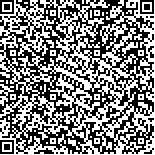| 摘要: |
| [摘要] 目的 分析暴发性1型糖尿病(FT1DM)的临床特征,提高临床医师对FT1DM的认识。方法 收集2003年10月至2019年12月广西医科大学第九附属医院收治的15例FT1DM患者的临床资料,另选择同期49例非暴发性1型糖尿病(NFT1DM)患者的临床资料进行分析。根据病程、餐后C肽(PCP)、糖化血红蛋白(HbA1c)水平,将NFT1DM患者分为短病程NFT1DM组(25例)、长病程NFT1DM组(24例);低C肽NFT1DM组(27例)、高C肽NFT1DM组(22例);低HbA1c NFT1DM组(7例)、高HbA1c NFT1DM组(42例)。对各组间的临床指标进行比较。结果 与NFT1DM组比较,FT1DM组年龄更大,病程更短,HbA1c、空腹C肽(FCP)、PCP水平更低,而血糖、血清肌酐(Scr)、血尿素氮(BUN)、血钾水平更高,差异有统计学意义(P<0.05)。FT1DM组、短病程NFT1DM组和长病程NFT1DM组在年龄、HbA1c、FCP、PCP、Scr、BUN和血钾方面比较差异有统计学意义(P<0.05)。FT1DM组、低C肽NFT1DM组和高C肽NFT1DM组在病程、血糖、HbA1c、FCP、Scr、BUN和血钾方面比较差异有统计学意义(P<0.05)。FT1DM组、低HbA1c NFT1DM组和高HbA1c NFT1DM组在年龄、病程、FCP、PCP、Scr、BUN和血钾方面比较差异有统计学意义(P<0.05)。结论 与NFT1DM相比,FT1DM有其特点。FT1DM的诊断分类值得进一步讨论。 |
| 关键词: 暴发性1型糖尿病 非暴发性1型糖尿病 临床特征 |
| DOI:10.3969/j.issn.1674-3806.2021.10.13 |
| 分类号:R 587.1 |
| 基金项目:北海市科技计划项目(编号:201303008,201995056);广西卫健委科研课题(编号:Z2015016) |
|
| Analysis of clinical features of fulminant type 1 diabetes mellitus and non-fulminant type 1 diabetes mellitus |
|
ZHOU Shao-bi, QIU Jun-lin
|
|
Department of Emergency Internal Medicine, the Ninth Affiliated Hospital of Guangxi Medical University, Beihai 536000, China
|
| Abstract: |
| [Abstract] Objective To analyze the clinical feature of fulminant type 1 diabetes mellitus(FT1DM), and to improve clinicians′ understanding of FT1DM. Methods The clinical data of 15 patients with FT1DM admitted to the Ninth Affiliated Hospital of Guangxi Medical University from October 2003 to December 2019 were collected, and the clinical data of 49 patients with non-fulminant type 1 diabetes mellitus(NFT1DM) during the same period were selected for analysis. The NFT1DM patients were divided into short-course NFT1DM group(25 cases) and long-course NFT1DM group(24 cases) according to the course of the disease, and were divided into low C-peptide NFT1DM group(27 cases) and high C-peptide NFT1DM group(22 cases) according to the levels of postprandial C-peptide(PCP), and were divided into low glycated hemoglobin A1c(HbA1c) NFT1DM group(7 cases) and high HbA1c NFT1DM group(42 cases) according to the levels of HbA1c. The clinical indicators were compared among the groups. Results Compared with the NFT1DM group, the FT1DM group was older, and had a shorter course of the disease, lower levels of HbA1c, fasting plasma C-peptide(FCP) and PCP, and higher levels of blood sugar, serum creatinine(Scr), blood urea nitrogen(BUN) and blood potassium, and the differences were statistically significant between the two groups(P<0.05). There were statistically significant differences in age, HbA1c, FCP, PCP, Scr, BUN and serum potassium among the FT1DM group, the short-course NFT1DM group and the long-course NFT1DM group(P<0.05). There were statistically significant differences in the course of the disease, blood sugar, HbA1c, FCP, Scr, BUN and serum potassium among the FT1DM group, the low C-peptide NFT1DM group and the high C-peptide NFT1DM group(P<0.05). There were statistically significant differences in age, the course of the disease, FCP, PCP, Scr, BUN and serum potassium among the FT1DM group, the low HbA1c NFT1DM group and the high HbA1c NFT1DM group(P<0.05). Conclusion Compared with NFT1DM, FT1DM has its characteristics. The diagnostic classification of FT1DM deserves further discussion. |
| Key words: Fulminant type 1 diabetes mellitus(FT1DM) Non-fulminant type 1 diabetes mellitus(NFT1DM) Clinical feature |

